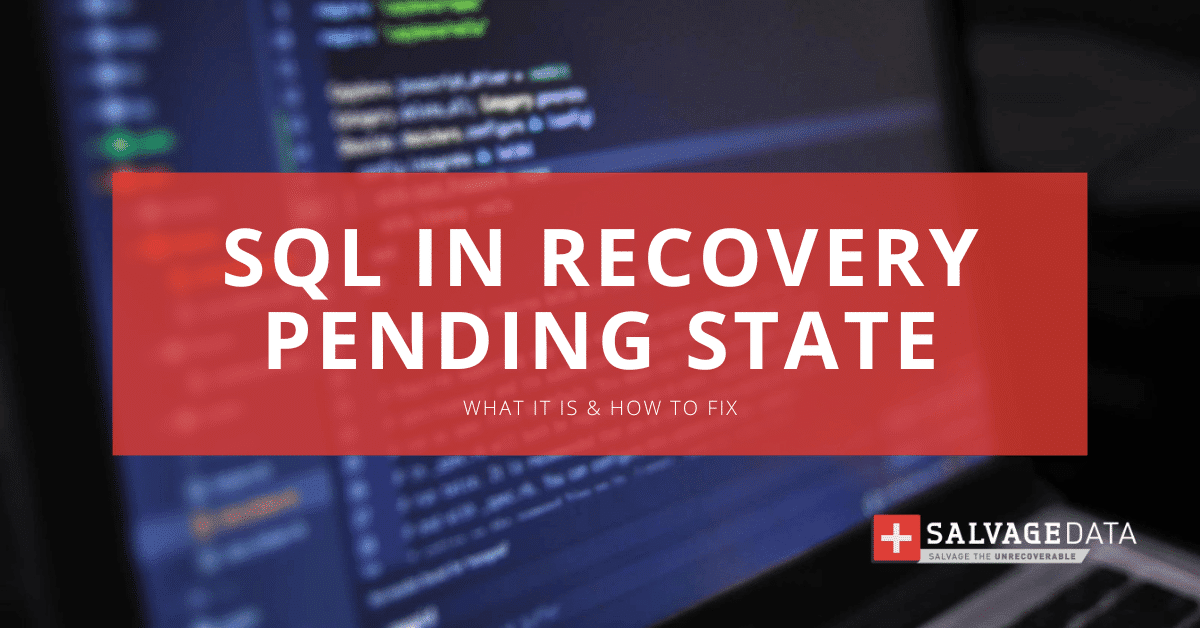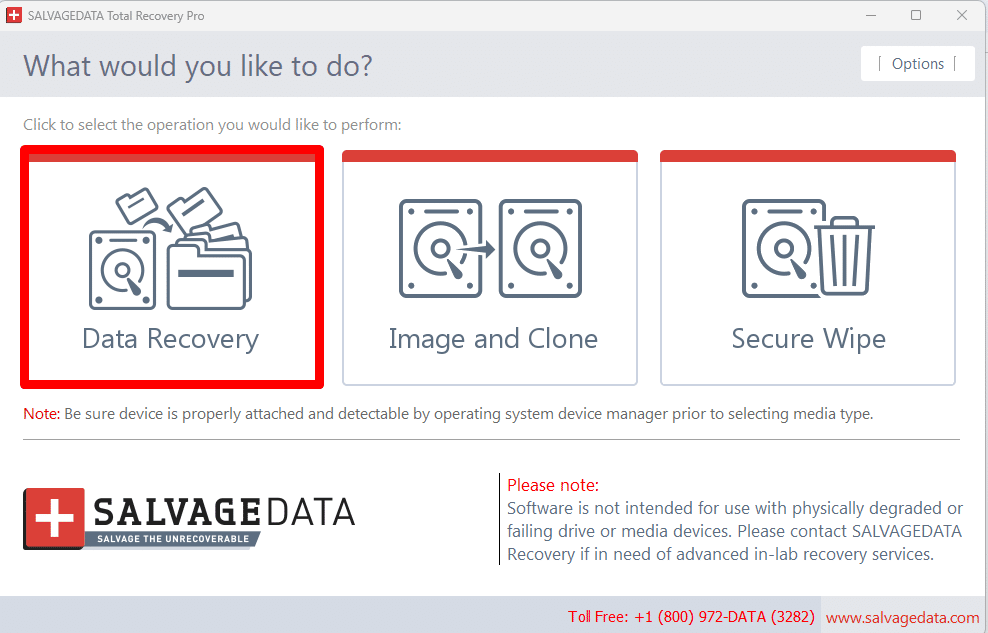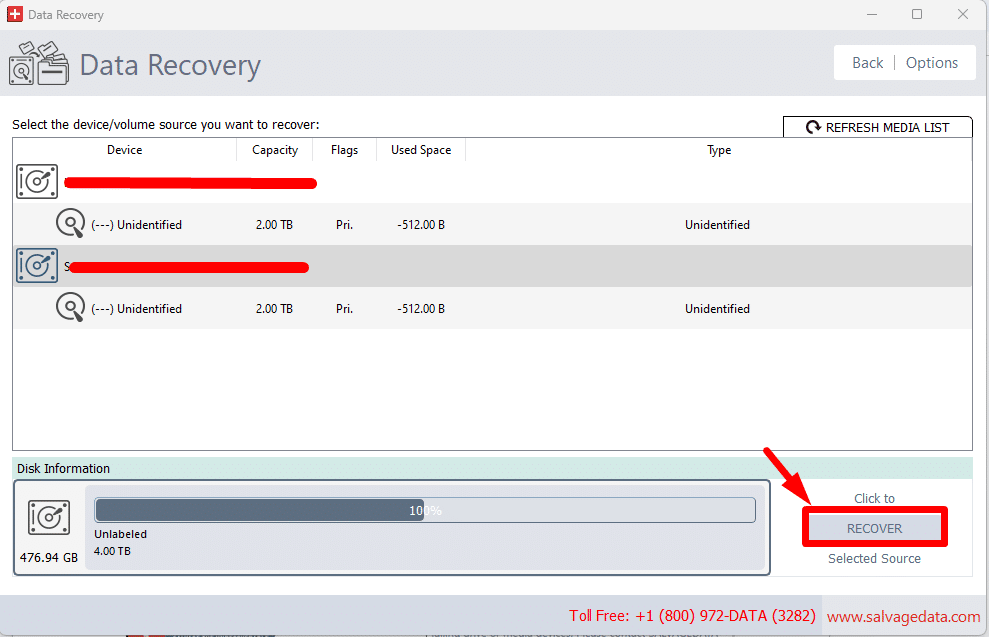Recent Articles
Quickest Mobile Data Recovery Case: 100% of Data Recovered in One Hour
How to fix a corrupted database on PS4
How to Troubleshoot Black or Blank Screens in Windows
LockBit Ransomware: A Comprehensive Guide to the Most Prolific Cyber Threat
How To Use iPad Recovery Mode
How to Prevent Overwriting Files: Best Practices
External Hard Drive Not Showing Up On Windows – Solved
How to Fix a Corrupted iPhone Backup
Backup and Remote Wiping Procedures
Common VMware Issues and Troubleshooting Solutions

I think there's an issue with my storage device, but I'm not sure Start a free evaluation →
I need help getting my data back right now Call now (800) 972-3282
When a SQL Server database is marked in a Recovery Pending State, it means that one or more of its core files are in an inconsistent state. Therefore, the database cannot be accessed.
Once you know why this happens you can find the proper methods to resolve the issue so that you can access your data again. Then you can execute queries in SQL Server Management Studio (SSMS) and fix the SQL Server Database In Recovery Pending State problem.
How to check the SQL database state
Before we get into fixing the recovery pending state, let’s look at the other available states of SQL Server databases. There are three normal states of a database:
- Online. If a single file is damaged, then the SQL server remains available and online.
- Suspect. If the database can’t recover the damaged data (if the recovery failed), it will show as a suspect.
- Recovery Pending. When the server knows the database needs to be restored but something went wrong and it can’t start the recovery, then it shows as recovery pending.
To check the state of a database, you can use the following SQL query:
SELECT name, state_desc from sys.databases
GO
The results will display all existing databases along with their states. If any of the databases show “Recovery Pending” as the value in the state_desc column, it signifies that your database is in that specific state.

How to Fix Recovery Pending State in SQL Server Database?
To fix the ‘SQL server database in recovery pending’ problem, follow the steps below:
- Open the SQL database in EMERGENCY mode to mark it as READ_ONLY. This grants access to the system administrator only. Then, open SQL Server Management Studio (SSMS).
- Create a new query window for your database by right-clicking on it from the Object Explorer panel and selecting New Query.
- Execute the following commands:
ALTER DATABASE <DBName> SET EMERGENCY; GO
ALTER DATABASE [DBName] set single_user
GO
DBCC CHECKDB ([DBName], REPAIR_ALLOW_DATA_LOSS) WITH ALL_ERRORMSGS;
GO
ALTER DATABASE [DBName] set multi_user
GO
- After executing the above commands, take the database offline (detach) and then back online (re-attach) using the commands:
ALTER DATABASE [DBName] SET EMERGENCY;
ALTER DATABASE [DBName] set multi_user
EXEC sp_detach_db ‘[DBName]’
EXEC sp_attach_single_file_db @DBName = ‘[DBName]’, @physname = N'[mdf path]’
- After performing the above steps, the server will get rid of the corrupt log and automatically build a new one.
Why do databases go into a recovery pending state?
A database can go into a recovery pending state due to one or more reasons such as corruption of system data files, lost write operations, and disk errors. In most cases, this issue occurs when there are inconsistencies between the primary file and its log files or differential backups.
How to repair SQL database and recover the data
You can run the DBCC CHECKDB command on your SQL server to check for any errors and corruption in the database files and fix it.
You can use data recovery software to restore your SQL lost files. SalvageData offers free data recovery software.
To use the SalvageData data recovery free tool, first, you must download and install the software.
Agree with the terms and conditions and then click on the DATA RECOVERY button.

After that, select the drive you wish to retrieve your files from. Then, click on RECOVER.

Choose the file system and click on SCAN.
Once the scanning process is complete, you can choose from the list which files you want to recover.
If you prefer, you can contact our data recovery experts 24/7/365 for an emergency data recovery service.













